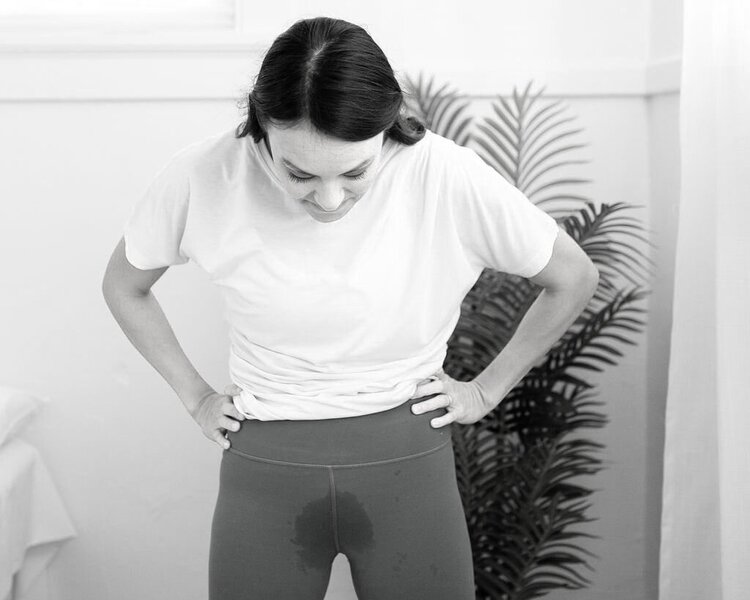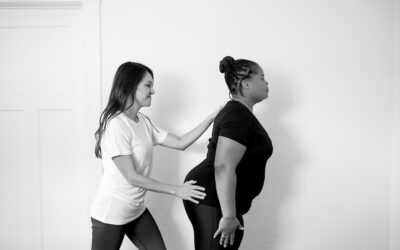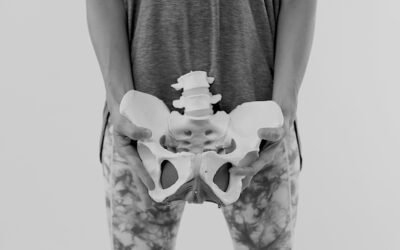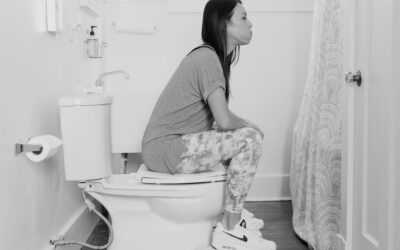For most, thinking about how to pee as a woman (or anyone!) isn’t something you worry about. It’s like breathing. You just do it and when you gotta go, you go.
But there is, in fact, a correct way to urinate which can help to:
- Avoid pelvic floor problems
- Develop bladder habits that make bathroom breaks less stressful
- Decrease the risk of urinary tract infections
Below are some peeing tips that your pelvic floor will thank you for.
Tips for How to Pee as a Woman
The guidelines below walk you through the best practices for peeing to optimize your pelvic floor health right now. Share these with your kids, parents, friends, partners and patients these 6 tips, as this simple education will save a lot of pelvic floors.
#1 No “Just in Case” Pees
Before a long road trip we’ve all done it. “Let me just go right before we leave.” These “just in case” pees can become a pesky habit that can lead to urinary urgency and frequent urination.
Try to avoid a bathroom trip just because you see the toilet or it’s convenient before leaving somewhere. Going “just in case” seems like it would make sense if it’s been awhile since you last peed or you have a full bladder! In reality, it’s creating a habit to go when you don’t actually need to, and can cause your bladder to shrink over time. Don’t confuse your bladder, and pee when you have the urge to pee.
#2 Don’t Wait Too Long
If it’s been more than four hours, you likely need to go. The habit of “holding it” may contribute to over-stretching your bladder capacity. If you go long stretches without peeing, you may also be restricting your fluid intake.
Normal is to pee every 2-4 hours during the daytime and 0-2 times during sleeping hours at night. If you delay the urge to pee, your pelvic floor muscles can go into a state of chronic tension. When you do use the bathroom, you may have difficulty relaxing and letting pee come out naturally.
#3 Sit Down on that Seat!
Sitting down on a toilet seat to pee helps your pelvic floor and urinary sphincters relax so your bladder can fully empty. Place your feet flat on the floor, lean forward and rest your forearms on your knees. You might even feel your pelvic floor muscles relax in this position.
Sitting on the toilet is the optimal position to pee. If you’re in a public bathroom you prefer not to touch, cover the seat or wipe it down so you can sit on the toilet. Then relax your pelvic floor, and fully empty your bladder.
#4 Take your Time
The bladder wall is a muscle that pushes your pee out for you. There is no need for you to push to empty your bladder. The additional pressure from pushing can stretch your pelvic floor muscles and ligaments over time and lead to pelvic floor weakness, urinary leakage, and even pelvic organ prolapse.
If you feel like you have a few more drops at the end, rock your hips side to side or stand up and sit back down (double voiding) and just relax to allow any remaining drops out. Avoid pushing or straining to get your urine out fast. No power peeing.
#5 Don’t do kegels when you pee.
Kegels strengthen your pelvic floor muscles. By performing kegels when you pee, you are tightening and contracting your pelvic floor muscles instead of relaxing them to empty your bladder. Contracting your pelvic floor muscles while peeing sends a mixed message to your bladder and brain and prevents your bladder from completely emptying.
Peeing is the time for relaxing your pelvic floor muscles, not tightening by doing kegels.There is one exception to this rule: try a kegel contraction while peeing to see if you can stop your urine stream. After trying once to ensure you are performing a proper kegel contraction, avoid doing kegels when you pee.
#6 Stay Away from Certain Products
The optimal way to cleanse your vulva is to rinse with water. As tempting as it may be, avoid using products on your vulva or urethra area with fragrances, parabens, or harsh chemicals as these can irritate your tissues.
Many products can change the pH balance in your vulva, vagina and urinary tract increasing your risk of urinary tract infections or bacterial infections in the vagina. So as a rule of thumb – if it glitters, sparkles, tingles or smells don’t put it down there.
How to Optimize Your Bladder Habits
Along with using the proper position to pee, creating a routine of optimal bladder habits will help decrease risk factors for pelvic floor dysfunction. Use the tips below as guidance.
- Sip water throughout the day instead of chugging it.
- Urinate every 2-4 hours during the day. If you’re pregnant, this will be a lot more often.
- Urinate only 0-2x per night – again, this will probably be more if you’re pregnant!
- Schedule bathroom breaks during the day to prevent waiting over 4 hours to pee, which can increase your risk of urinary tract infections.
- If you wake frequently at night time to pee, stop fluids approximately 2 hrs before bed.
To learn more about how to pee as a woman and support your pelvic floor health, check out the V-Hive Membership.
The V-Hive Membership is an online and on-demand workout platform for all things pelvic floor and core. If you’re new to the strengthening game, start with my Strengthening Series. This 12-week series will help strengthen your pelvic floor and help hold in those frequent pees. Start your 7-day free trial today!





